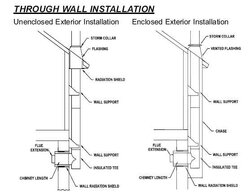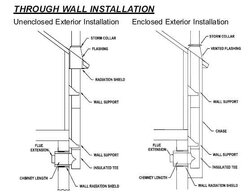- Aug 1, 2006
- 17
What would be the minimum amount of roof overhang I would need to safely run 6" double wall pipe through? I have either 15"-18" (I know it's one of the two measurements just haven't taken a tape measure up to double check) where I want to run my chimney pipe through, I had someone tell me that 15"-18" wouldn't be enough and I'd have to run the pipe around the overhang. Does anyone know for sure what the minimum would be? Thanks!




